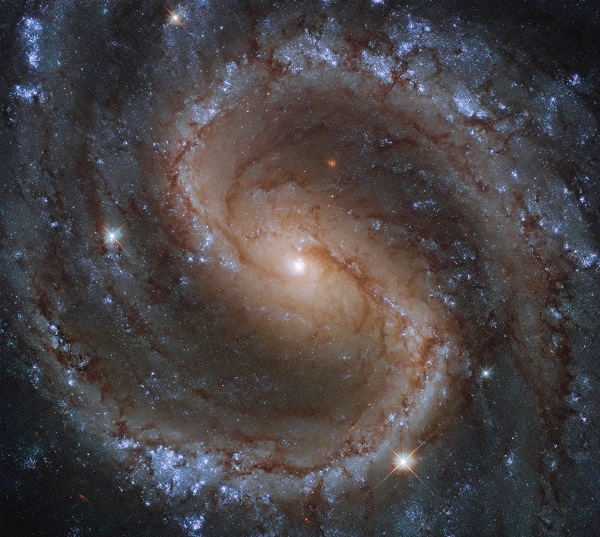NASA Hubble telescope captures the 'Lost Galaxy'
29 Jan 2021 16:06:31
Washington, Jan 29: The Hubble Space Telescope of NASA captured the images of the NGC 4535 which is also known as the 'Lost Galaxy'. The image highlights that the young and hot stars that hang out are the bright blue spots. On the other hand, older and cooler stars are highlighted by the bright shades nearer to the center. The hazy spiral galaxy is one of the largest in the Virgo cluster, which is a collection of more than 2,000 galaxies.

An amateur astronomer Leland S Copeland fixed his telescope lens on a distant galaxy in the Virgo constellation first in 1950s. He then witnessed an eerie spiral that was shrouded in dust. He named the spiral as the 'Lost Galaxy'. The NGC 4535 galaxy in the Virgo Cluster is located about 50 million light-years from Earth. When viewed through NASA's Hubble Space Telescope, the haze that clouded Copeland's Lost Galaxy appears as huge and vibrant sea of stars, much like the Milky Way.
The galaxy is one of the largest of some 2,000 galaxies in the Virgo Cluster. It is a barred spiral galaxy that means a vast swirl of stars having a distinct bar structure at its center. The galaxy gives the yellowish glow at its central bulge. The yellowish glow suggests the way to the oldest and coldest retinue of stars in the Lost Galaxy. The Galaxy was discovered in 1785 by William Herschel who found the planet Uranus. The galaxy was termed as the Lost Galaxy by Copeland because then he had a glimpse of NGC 4535 using his small yard lenses.
NASA released the image of the lost galaxy earlier in Jan as part of an ongoing survey of 38 spiral galaxies located within 75 million light-years of Earth. The concept of spiral galaxy was first described by Edwin Hubble in 1936. The Spiral galaxy is the most common type of galaxy in universe. It has a spiral shape because of long arm full of stars. The galaxy extends from the center into the galactic disc. The galaxy comprises of a flat, rotating disk containing the stars, gas and dust, and a central concentration of stars called as bulge. It is surrounded by a much fainter halo of stars.